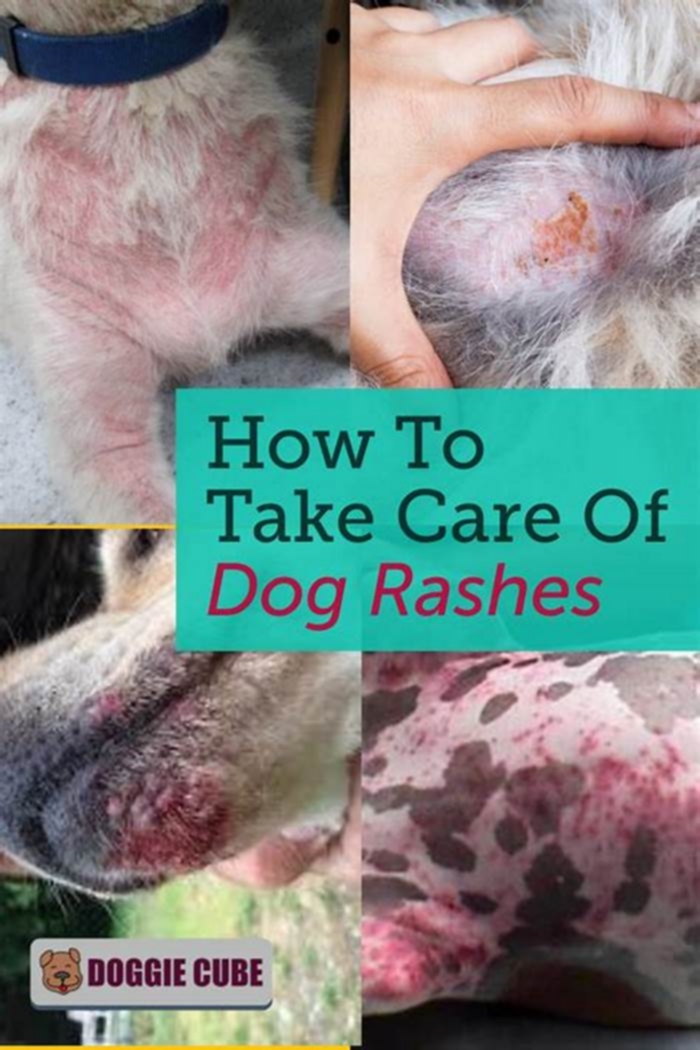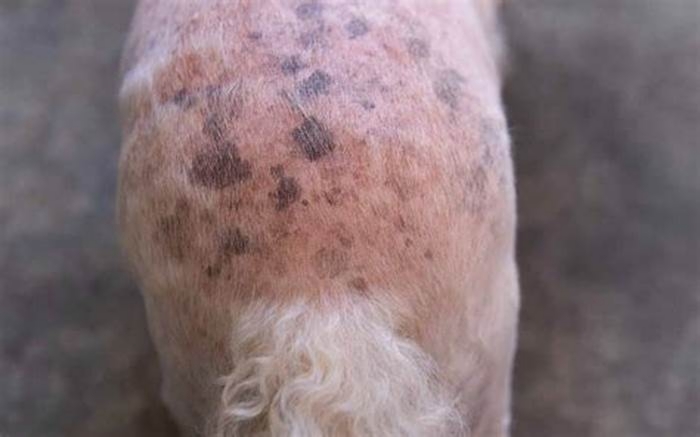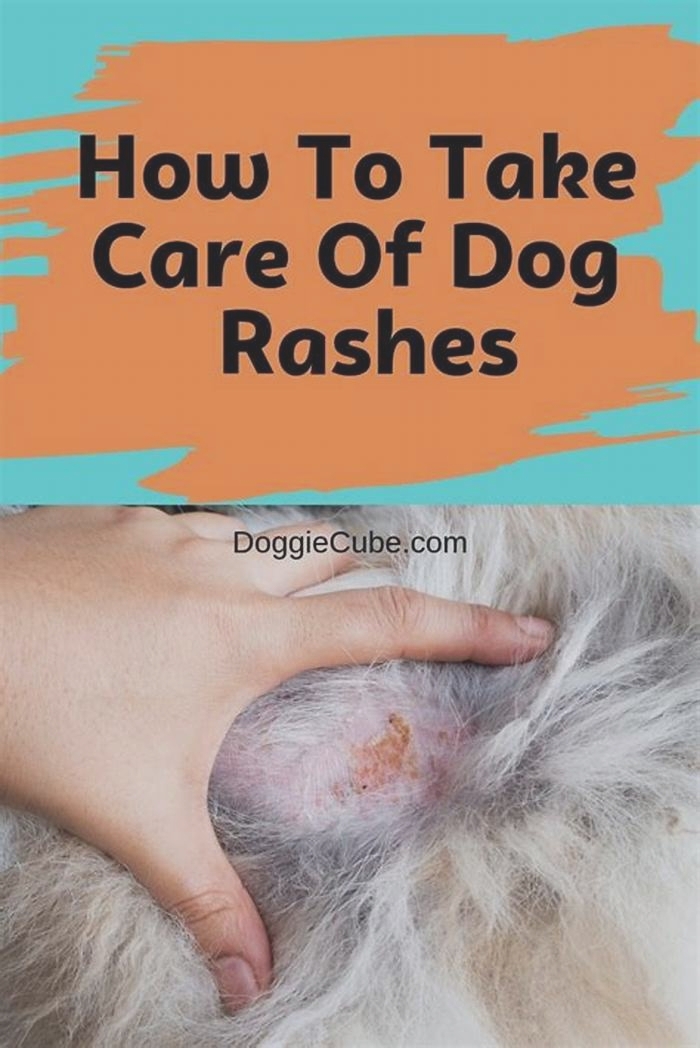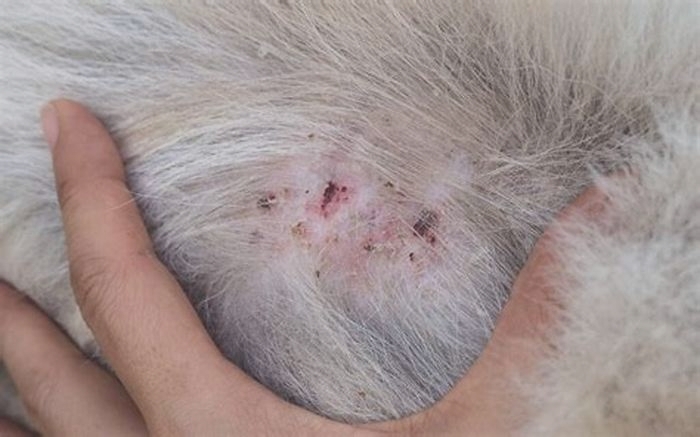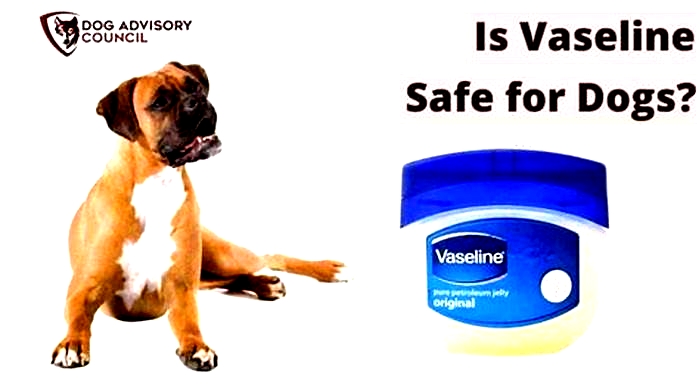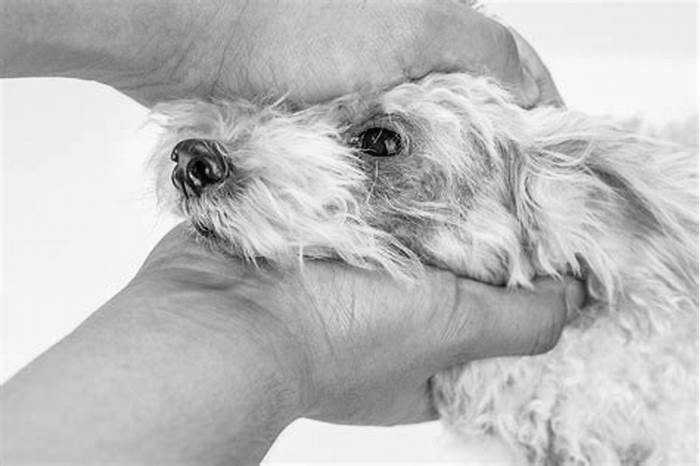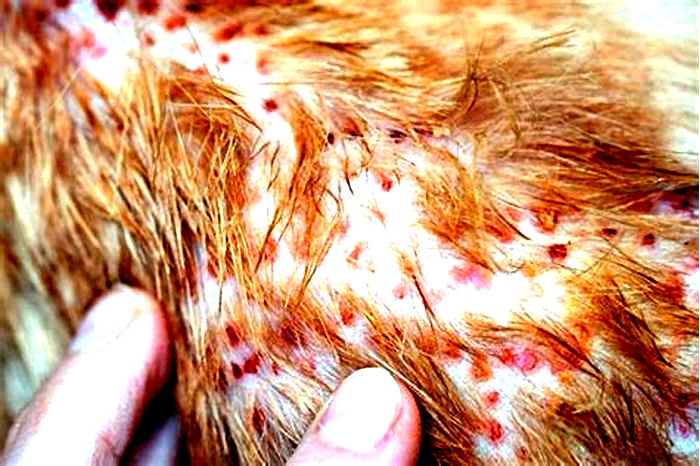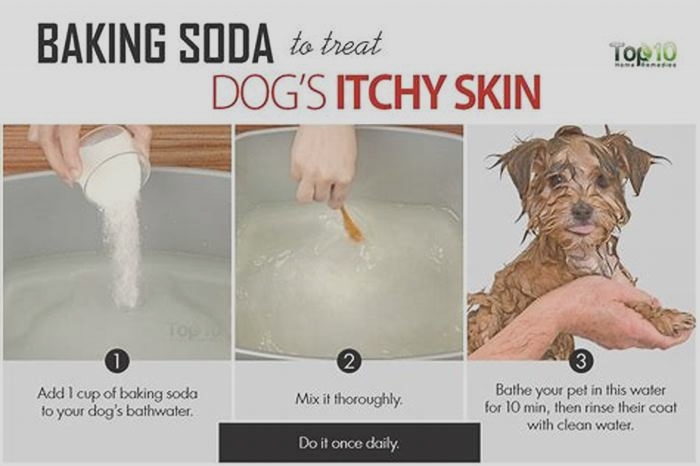How do dogs get heat rash on belly
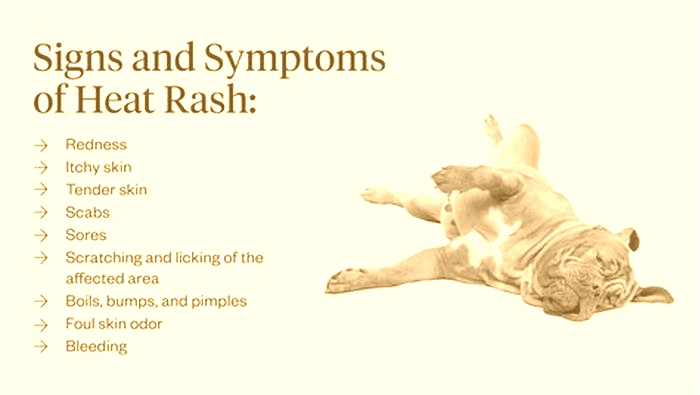
Heat Rash on Dogs Symptoms, Home Remedies and Prevention
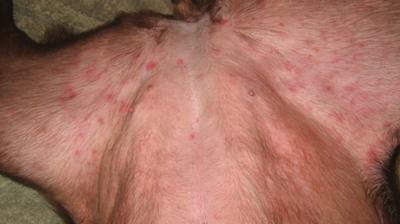
Just like babies react to too much heat through the formation of heat rash on their skin, so do dogs. When subjected to excess heat, your beloved pooch may suffer some tiny red bumps that take the appearance of pimples. This is usually heat rash on dogs. Although rarely a health concern, continued exposure to initial surroundings that resulted in the formation of the pimples could see them get infected. To prevent this, timely intervention is necessary. Below we discuss the causes, symptoms, home remedies and treatments of dog heat rash.
Heat Rash on Dogs
Just like humans, dogs too can suffer heat rash. These rashes are not only uncomfortable but could become painful, swollen and infected. If not dealt with in a timely manner, they could result in inflammation, itching, and anxiety. Heat rashes are as a result of Staphylococcus pathogen which gets aggravated by humid and hot environmental conditions. They exhibit characteristics not so different from those seen in humans as discussed below.
Symptoms of Heat Rash on Dogs
Initially, a heat rash begins as a non-problematic skin irritation. This may result in your dog scratching regularly. The symptoms for heat rash on dogs may include the following:
- Tiny red bumps on the skin.
- Minor irritation on the dogs skin leading to frequent scratching.
- Oozing red rash which may appear as pimples, scabs or boils that develop a bad odor with time.
Dog Heat Rash Pictures
To help illustrate the above symptoms further, here are some dog heat rash pictures.


Home Remedies for Heat Rash on Dogs
Before administering any form of treatment, it is important to ascertain that the rash on your dog is a heat rash. In case you are in doubts, consult your veterinarian. If caught and treated on time, heat rash will not have any negative effect on your dogs health. However, if left untreated and the environmental conditions leading to it remain unchanged, the rash could develop to infected blotches that could result in the deterioration of your pets health. To ease the symptoms and discomfort, try the following natural and home remedies for heat rash on dogs.
1. Cold Packs
When your dog suffers heat rash, they experience inflammation and irritation. There also is a prickly sensation as well as itching. To take care of this, cold treatments in the form of cold compresses or ice packs can help. These are easy to use as all you require is to wrap ice cubes in a washcloth. Frozen bags can also work in the same way. Apply the cold compress on the area with heat rash and hold it for about 10 minutes. This can be repeated every four to six hours to relieve your dog the discomfort of the heat rash. Repeat the procedure for up to three days by which time the cold should have subsided.
2. Baking Soda
Baking soda acts as an exfoliating agent when used on the skin. It helps to unclog pores and get rid of dead skin. In addition, baking soda can help get rid of heat rash on dogs by eliminating itching and inflammation. This will also help get rid of any pain. There are different ways on how to use baking soda to relief dog heat rash:
- In a cup of water, add a tablespoon of baking soda. Dip a washcloth in this solution and use it to wipe the area with a heat rash on dogs. Repeat this procedure as necessary until the heat rash is gone.
- Combine equal amounts of water and baking soda. Apply the resulting paste on the area with a rash and allow it to rest for 20 minutes before rinsing it off.
3. Aloe Vera
This is a perfect treatment for sunburns in dogs and will go a long way in relieving heat rash in dogs. Its healing properties will see it deliver healing qualities to your dogs skin. It will cool the affected area naturally and also stop any inflammation resulting from the heat rash. In cases where itching and swelling are also being experienced, the remedy will take care of it too.
4. Calamine Lotion
For a long time, calamine lotion has been used to relieve various skin discomforts. Given its cooling and anti-itch properties, it will serve as a great remedy for heat rash on dogs. To get rid of the red rashes, simply apply as instructed by the manufacturer.
5. Hydrocortisone Cream
A 1% hydrocortisone cream can be accessed over the counter. This cream will help reduce itching as well as get rid of the associated redness that comes with the rash. Use this for up to three days and not much longer as it could have adverse effects on the skin of your dog.
Additional home remedies that can help in treating the rash include milk of magnesia, oatmeal, and Listerine. To promote fast healing and recovery of the skin, you can give your dog B vitamins, omega 3 fatty acids (cod liver oil, krill oil) as well as vitamin E. These facilitate stimulate tissue repair and create an oily layer beneath the skin thus ensuring quick recovery as well as maintenance of a well moisturized, supple and healthy skin coat in dogs.
6. Apple Cider Vinegar
Since heat rash is common in the folds surrounding the armpits, neck and groin area if they become moist and are not well catered for they could subject your dog to yeast infections. Using apple cider vinegar on the rashes can help curb this. Do not use the remedy without diluting it as it could be too harsh on the skin. Use an equal portion of apple cider vinegar and water and use a washcloth to apply the solution on the heat rash. Repeat this about three times a week.
In case the above home treatments do not work, you will need to talk to your veterinarian for prescription treatments. These may come in the form of oral or topical medication as well as antibiotics in case the rash is suspected to be getting infected. Among these may be cortisone tablets or creams to help quell associated itch and inflammation. Your vet knows best what is suitable for your dog.
Preventing Heat Rash on Dogs
In addition to preventing your dog against sunlight in the summer, you also have to keep watch and ensure they dont suffer heat rash. Humidity and heat are the reasons why your pet suffers heat rash. When leaving him inside the house, ensure the air conditioner is on. When heating up the room, do not allow the dog to stay too close to the heater. Let your dogs surrounding environment be one you would also be comfortable in. In case you are concerned about the rash, talk to your veterinarian.
References
Dog Heat Rash: What It Looks Like (with Pics) & How to Treat

This article was updated on December 6th, 2022
Heat rash is an issue I encounter fairly regularly in my practice, especially in the summer months. Many owners like to get outdoors with their canine companions when the sun is beaming down. However, many owners dont take into account the effects that extreme heat can have on dogs and, as a result, many dogs are rushed to their veterinarians for emergency treatment after they overheat.
Unfortunately, this is still an issue that many owners are oblivious to, but this article aims to educate owners and will go into detail on how to know if your dog has heat rash and what you can do at home to help your dog.
What is Dog Heat Rash?
Prolonged exposure to very hot temperatures results in irritation to the skin and changes in the skins appearance. Dogs dont sweat in the same way humans do and instead regulate their body temperature through panting; their thick coats can leave them susceptible to the effects of overheating.The main cause of heat rash in dogs is overexposure to heat or direct sunlight.
Below are the most common symptoms seen with heat rash:
- Red inflamed skin
- Itchy skin persistent scratching and licking
- Ulceration, pimples and/or pustules on the skin
- Scabbing of the skin
- Bleeding
- Smelly skin
The effect of extreme heat can also have a negative impact on your dog as a whole, resulting in:
- Lethargy and feeling unwell
- Dehydration.
Damage to the skin can also result in secondary bacterial or fungal infections, further exacerbating the issue.
Heat rash affects dogs of all shapes and sizes, but overweight dogs or dogs with very wrinkly skin are particularly vulnerable. Dogs with more skin folds such as shar peis, bulldogs and pugs are often at a higher risk of developing heat rash.
What Does Dog Heat Rash Look Like? (With Pictures)
Heat rash can take various forms depending on the severity and area of the body affected. The general appearance is that of red, inflamed and sometimes raised skin such as that shown in the photos below:
1. Mild Heat rash slight redness to the skin and blotchy appearance. Mild cases of heat rash may be of little concern. If your dogs skin is only mildly reddened and they are only scratching at themselves occasionally then the problem will likely resolve itself within a few days, especially if you implement some of the home remedies we will cover later in this article.
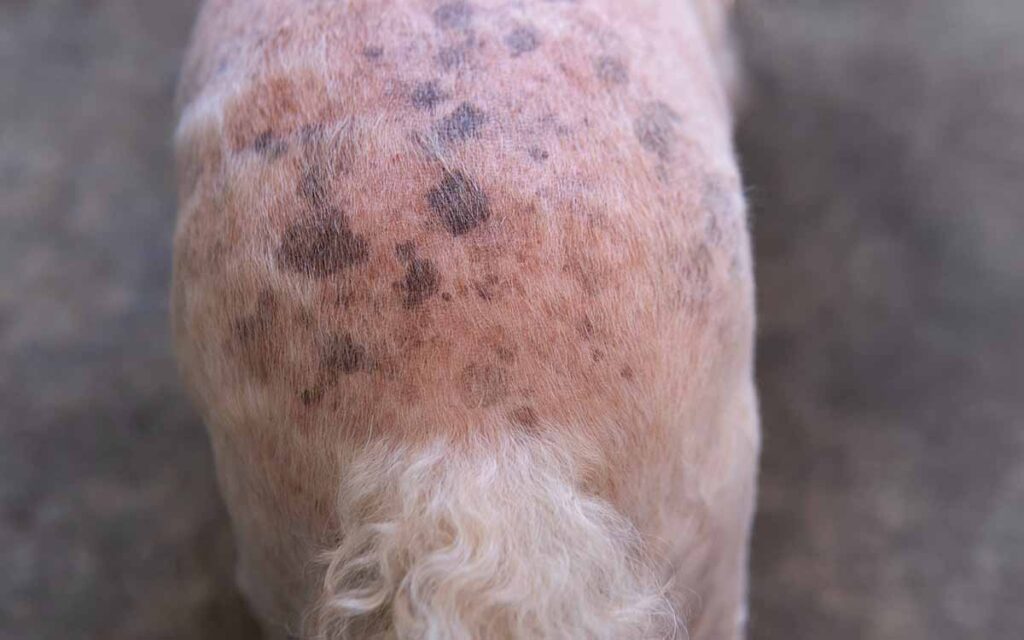
2. Moderate heat rash more red appearance, irregular and uneven skin surface, as seen on the picture below:
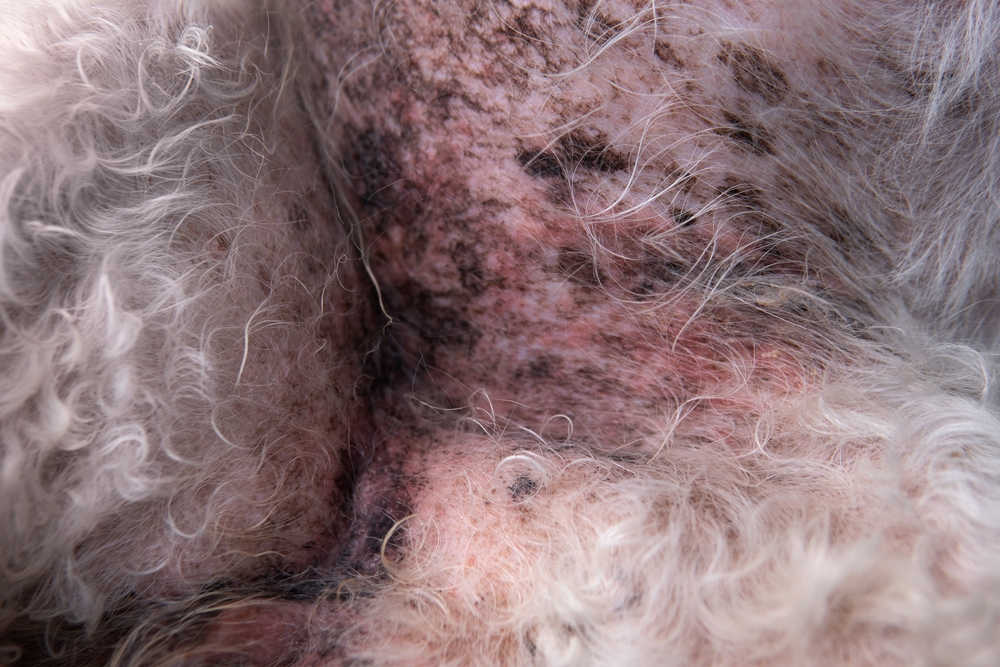
3. Severe heat rash bright red, ulcerated skin often with hair loss and signs of secondary bacterial infection.
If your dog has very red, ulcerated skin and they are frantically scratching at themselves then this poses a concern and they should be taken to the veterinarian immediately. Signs of infected skin such as pustules or a foul smell are also a reason to seek veterinary intervention.
If your dog is unwell in any other way, such as showing signs of lethargy, vomiting and dehydration then they may also have heat stroke alongside a rash. This should be treated as an emergency and you should take them to the vet immediately.Below is a picture showing a severe case of heat rash on a dog:
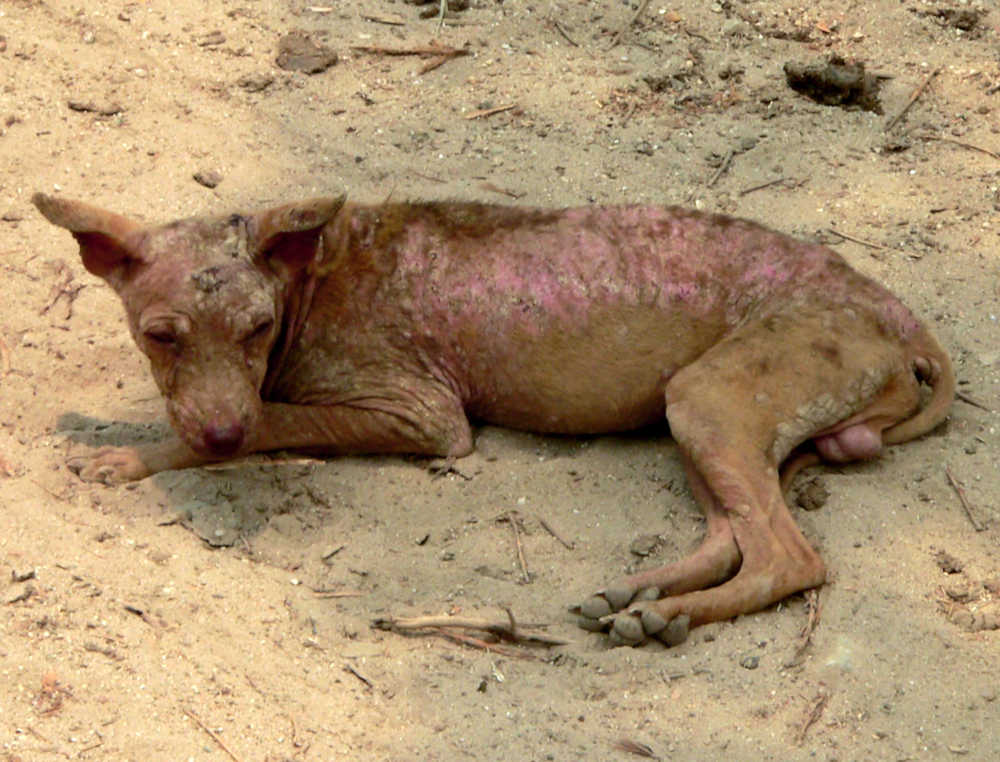
4. Focal heat rash sometimes heat rash can occur in a more local, specific area of skin rather than affecting the whole skin more broadly.
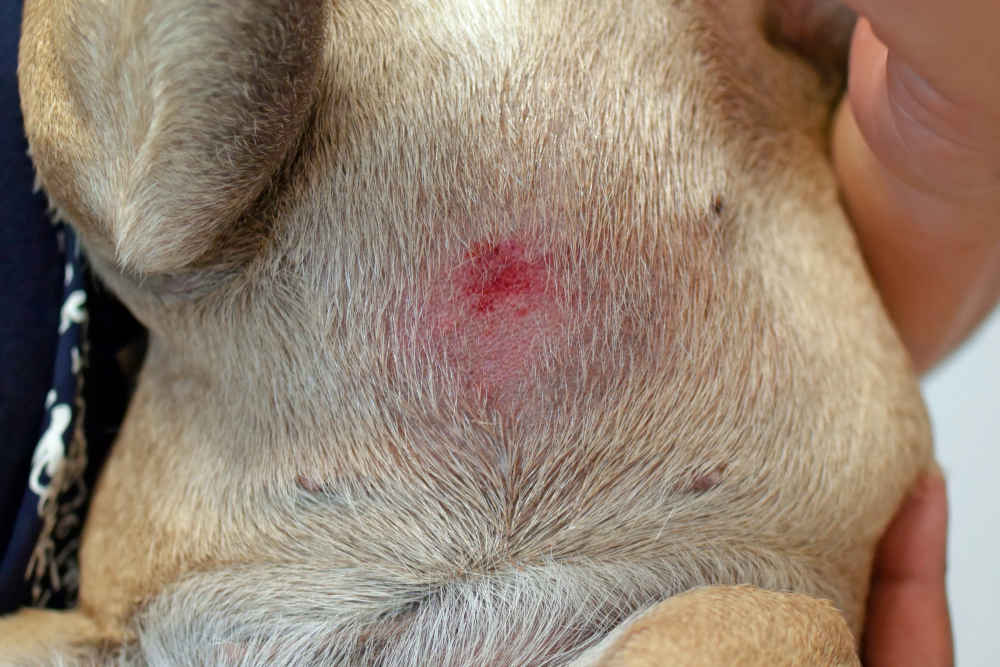
How to Tell if Your Dog Has a Heat Rash
While it can be difficult to say for sure if your dog has heat rash, the sudden appearance of any of the symptoms above shortly after spending time in a hot environment makes heat rash quite likely. Mild cases of heat rash may respond to applying a cool towel or soothing cream to the affected areas of your dogs skin if they improve then its likely that your dog is suffering from heat rash.
4 Steps You Can Take at Home to Help Your Dog
While severe cases of heat rash will require veterinary attention, there are a few steps you can take at home to help alleviate the symptoms of heat rash:
- Put your dog somewhere cool. Avoid direct sunlight and heat and try to cool them down as much as possible. Placing them in a bath of cool water or directing a fan to blow cold air in their direction may help.
- Apply a cool towel or cold compress to the affected areas. The sooner you can do this, the more effective it will be. This will help to cool down the affected areas of skin before symptoms worsen.
- Apply aloe vera to the affected areas. This can be either directly squeezed from the plant or in the form of a soothing aloe vera cream (See this cream on Amazon). Other soothing creams may work too.
- Call your vet: if no improvements are seen after 24-48 hours, call your vet: delaying veterinary treatment could endanger your dog and make the issue a lot worse than it is now.Even mild cases of heat rash can turn into a more complex skin infection or irritation.
Is Dog Heat Rash Serious? Is My Dog Suffering?
Mild cases of heat rash are not likely to cause your dog any more discomfort than a subtle itchy sensation, which can be treated by the remedies we will cover in this article.However, more serious cases of heat rash where the skin is very inflamed and damaged are likely to cause extreme discomfort to your dog. Itching and licking at affected areas results in more damage and a vicious cycle develops. Damage to the outer layers of the skin also allows bacterial or fungal infections to take hold.
Exposure to extreme heat can be harmful to your dog in other ways too. Aside from a rash developing on the skin, dogs can develop heat stroke. This is a serious condition in which your dog overheats, becomes dehydrated and lethargic. Therefore, its important to not only be aware of symptoms of heat rash but also heat stroke as often the two come hand in hand.
Can My Dog Recover from Dog Heat Rash Without Vet Treatment?
Your dog may be able to recover from mild cases of heat rash if you implement the steps above. However, if the symptoms are persisting more than 48 hours or are getting worse then you must take your dog to see the vet immediately as its likely that they require stronger treatment.
When to Call Your Veterinarian
If your dog has more than a moderate form of heat rash (based on the pictures above), or if you think there are signs of skin infection such as pustules or a foul smell then veterinary intervention is required. A heat rash that isnt responding to the home remedies discussed above will also require help from your vet.
Its also important to be aware of the symptoms of heat stroke as these conditions often go hand in hand with a dog that has overheated. Any signs of lethargy, dehydration, vomiting or even seizures should ring alarm bells and youll need to take your dog to see the vet straight away.
How Can the Vet Help with Dog Heat Rash? How Much Will It Cost?
For those more severe cases of heat rash that havent responded to home remedies then the vet can help out.
Vet Diagnosis
Diagnosis of heat rash is challenging because it can look very similar to other skin diseases such as allergic dermatitis and parasitic infection. The diagnosis is made by ruling out other causes and by assuming heat rash is the cause based on the information you provide the vet, such as whether your dog has spent a lot of time in warm weather recently.
Various skin tests can be performed if necessary, such as skin scrapes and hair plucks to look at the structure of the skin under the microscope and determine a cause. However, for the most part treatment can be started without too many tests being performed. The treatments of heat rash are very similar to other skin diseases.
Vet Treatment
Your vet will likely provide some sort of anti-inflammatory medication to your dog to help reduce the redness and irritation in his skin. This may be in the form of oral steroids or topical steroid creams such as hydrocortisone.
In cases where secondary bacterial or fungal infection is suspected, your vet will likely dispense antibiotics or antifungal treatments these may be in the form of topical creams or oral medications.
The cost of treatment will depend on the severity of the rash present but most topical treatments and steroids arent overly expensive. Expect a bill between $50-200 depending on how bad your dogs rash is and how well your dog responds to treatment.
What you Should Know Before the Vet Visit
Theres a few questions that your vet will likely ask you should you visit for an appointment and it helps to have the answers prepared in advance. Questions they may ask include:
- Has your dog been exposed to extreme heat and/or direct sunlight recently? If so, for how long?
- How long has your dog had a rash?
- Is your dog itching or chewing at themself?
- Is your dog displaying any other symptoms? Are they well in themself?
- Have you tried any treatments at home for your dogs rash?
Prevention Methods for Dog Heat Rash
Prevention of heat rash revolves around reducing your dogs exposure to extreme heat and direct sunlight. Keep your dog well hydrated and cool, especially on very warm summer days. Only take your dog out for walks early in the morning or late in the evening when its warm outdoors and make sure they have plenty of water available.
Typical Recovery Time/Prognosis for Dog Heat Rash
Dogs with heat rash typically make a quick recovery if treatment is started early. Dogs with mild to moderate heat rash will often show a marked improvement in a few days, more severe cases of heat rash where secondary bacterial infection of the skin is present may take a couple of weeks.
Generally heat rash isnt life-threatening but the other effects of heat exposure can be. Should you notice your dog appearing unwell and lethargic then seek veterinary advice immediately as they may be suffering from heat stroke.
What Looks Like a Heat Rash, but is Not a Heat Rash
The symptoms listed above are not exclusive to heat rash and many other skin conditions can look very similar. For example:
1. Allergic dermatitis inflammation of the skin due to an allergic reaction can look very similar to heat rash; redness, pimples, scratching etc are all symptoms of allergic dermatitis and so it can be easy to confuse these conditions.
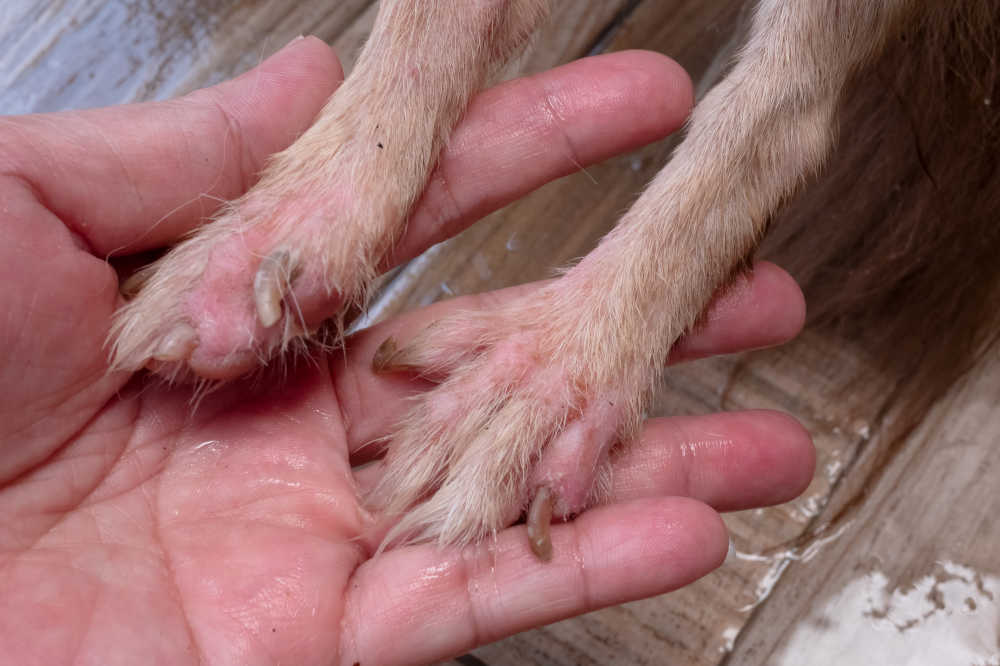
2. Hot spots. Hot spots, technically known as acute moist dermatitis, are red, inflamed areas of skin that can seem to appear overnight. These spots may occur anywhere on a dog but are most common behind and under the ear, legs, and on the hips. The area will be moist and typically have some purulent oozing. Often there is matted fur covering and hiding the hot spot. Learn more about hot spots in dogs.
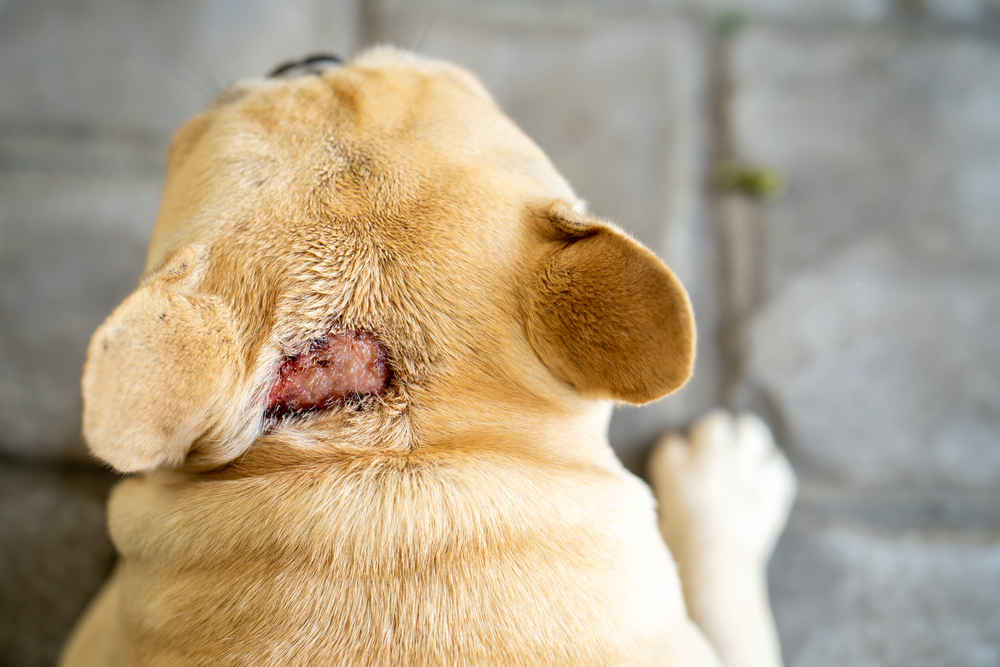
While either of these conditions could be the cause of your dogs recent rash, if your dog has recently spent time outdoors in the heat then a heat rash is very likely.
Dog Heat Rash FAQs with the Vet
Where is Heat Rash Most Often Seen?
Heat rash tends to affect the areas of the skin where it is thinnest, most sensitive and hairless as well as areas when the skin is folded on itself. The most common areas include, but are not limited to:
- belly,
- groin, and
- armpits.
How Does a Heat Rash Look on a Dog?
Heat rash can take many forms depending on the severity of the condition. It often appears as a reddened, ulcerated area of skin. The skin may appear uneven on the surface or even have pustules present indicating a secondary bacterial infection.
What is the Fastest Way to Get Rid of a Dog Heat Rash?
Cool your dog down as soon as possible and apply aloe vera cream.
How Long Does a Dog Heat Rash Last For?
This depends on how severe the case of heat rash is but usually the symptoms will subside within a week or two, sooner if the correct treatment is started.
Does Vinegar Help a Dog Heat Rash?
While vinegar diluted 50/50 with water may help, I wouldnt recommend it as it could be too harsh on your dogs skin, especially if they have sensitive skin.
Does Baking Soda Help a Dog Heat Rash?
Baking soda when combined 50/50 with water to form a thick paste can have a soothing effect when applied to your dogs skin. However, this probably wont be very effective for severe cases of heat rash.
Does Benadryl Help a Dog Heat Rash?
While Benadryl may be useful in treating a rash, it will likely only be effective in cases where the rash is caused by an allergy since this medication is an antihistamine. Benadryl will likely have little effect for dogs with heat rash.
Can I Put Neosporin on My Dogs Heat Rash?
Neoporin is an antibiotic ointment that may be of some benefit in preventing bacterial infections in dogs with heat rash, however it is no substitute for proper veterinary intervention.
Should You Moisturize a Dog Heat Rash?
Yes, keeping a dogs skin moistened when they have heat rash is important in preventing any further damage to the skin.
Alex Crow, VetMed MRCVS, is an RCVS accredited Veterinary surgeon with special interests in neurology and soft tissue surgery. Dr Crow is currently practicing at Buttercross Veterinary Center in England. He earned his degree in veterinary medicine in 2019 from the Royal Veterinary College (one of the top 3 vet schools in the world) and has more than three years of experience practicing as a small animal veterinarian (dogs and cats).
View all posts
Disclaimer: This website's content is not a substitute for veterinary care. Always consult with your veterinarian for healthcare decisions. Read More.

